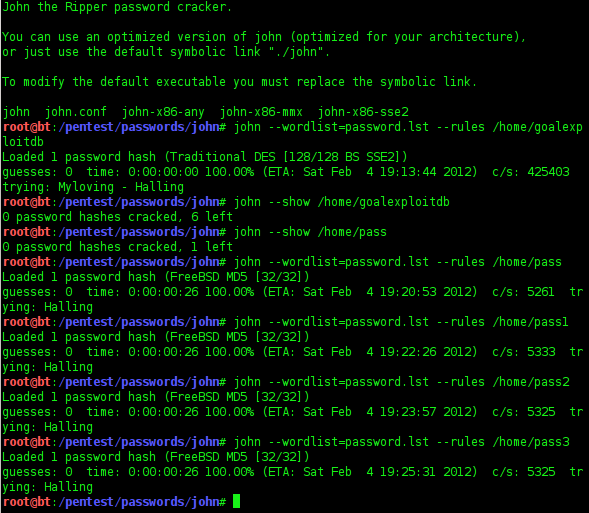Once you have downloaded a new module as a.wbm file, enter the Webmin Configuration module and click on the Webmin Modules button. Then use the form at the top of the page to install the module either from the local filesystem of the server Webmin is running on, or uploaded from the client your browser is on. For instance, if you have an extremely simple and common password that’s seven characters long (“abcdefg”), a pro could crack it in a fraction of a millisecond. Add just one more character (“abcdefgh”) and that time increases to five hours. Nine-character passwords take five days to break, 10-character words take four months, and 11.
Want to improve this question? So it's for Server Fault.Closed 5 years ago.I am really surprised at this behavior.
In Virtualmin, I can see the password for any SSH user by clicking the '(Show.)' link next to the 'Password ( ) Leave unchanged' option in a variety of locations. I have found that the passwords for all users including users with SSH access are stored in cleartext files in /etc/webmin/. This seems like an unnecessary risk! How can I prevent Virtualmin from storing passwords in this manner?
We saw from our previous article How to install Hashcat. Also we saw the use of Hashcat with pre-bundled examples. Now, Lets crack the passwords on your Linux machines, A real world example!
Create a User on Linux
Firstly on a terminal window, create a user and set a password for it as shown below. You can also follow How to Create a Linux User Account manually. You can set the password as : qwerty for this example purpose.
Viewing the Password Hash
On the terminal window, execute the below command to view the generated hash for the password “qwerty” for the user ramya.
Finding your Salt Value
Looking at the above hash value, following the username “ramya“, The $6$ value indicates the type 6 password hash (SHA512). The characters after $6$, up to next $ indicates the salt.
In the above, the SALT is : 6SA.1X/l
Follow this article to know more about What is password hashing, How Hashes are Cracked, SALTS and its use cases etc.,
How to find the Hashing Algorithm used on Linux
The hashing algorithm is defined in the file: /etc/login.defs. Search for the word “ENCRYPT_METHOD” to find the hashing algorithm defined:
As you see, my Linux box uses SHA-512 hash type.
Extracting the Hash from the file /etc/shadow and creating a Hash File
Insert one ore more hashes on a separate line for cracking multiple hashes at a time in the password.hash file.
List of common passwords available online
Well, we shall use a list of common passwords for cracking our hashes. The Common passwords can be downloaded from the below links:
You can also get few more passwords which were leaked or stolen from famous web sites like phpbb, myspace, hotmail etc., from here.
Firstly, lets try with only 500 common passwords.
Download the 500 Common Passwords
Cracking the Hash using Hashcat
Basic usage of hashcat is as follows:
Options:
We saw from above that our hash is of type 6. So we shall use : –hash-type=1800. If your /etc/login.defs uses MD5, then the hash type would be –hash-type=500 and like wise for other hash types. Few of them are shown below:
As we are trying the dictionary based cracking, we shall use the attack mode as –atack-mode=0.The other attack modes are:
You can get the list of Hash-Type and attack-modes using the help of hashcat.
Lets output the found hashes to a new file called found.txt and remove the corresponding hash from the file password.hash. So finally the command would be:
From the above computation, we were able to crack the hash and You would see the hash, with the cracked password “qwerty” at the end, as shown above:
Lets create many accounts with little complex passwords. Now lets crack these hashes with a broader range of dictionary passwords obtained from the multiple lists:
Now we are having a huge list of passwords which people normally use in the file: dictionary-passwords.txt
Now lets test our new hashes against these many passwords.
Fortunately, the new hashes couldn’t be cracked! Which means you need to increase your password base even more…
Total Mayhem 1.21. Jan 16 2016 Full Version 57 comments. DELETE ANY PREVIOUS VERSIONS OF TOTAL MAYHEM BEFORE INSTALLING THIS ONE. Bug fixes, new units, new projectiles and new sounds as usual. Have fun and enjoy. Good AIs and Tools for FA. Nov 1 2014 Full Version 10 comments. This is a pack of AI's and tools to use for Supreme Commander. Supreme commander loud. TotalMayhem V1.36 This mod will add new units to your supreme commander Forged Alliance game. This mod can be played in both single player and multiplayer. Add file Report Total Mayhem 1.21. Games: Supreme Commander: Forged Alliance: Mods: Total Mayhem: Files. 318.03mb (333,476,294 bytes) 30,106.
